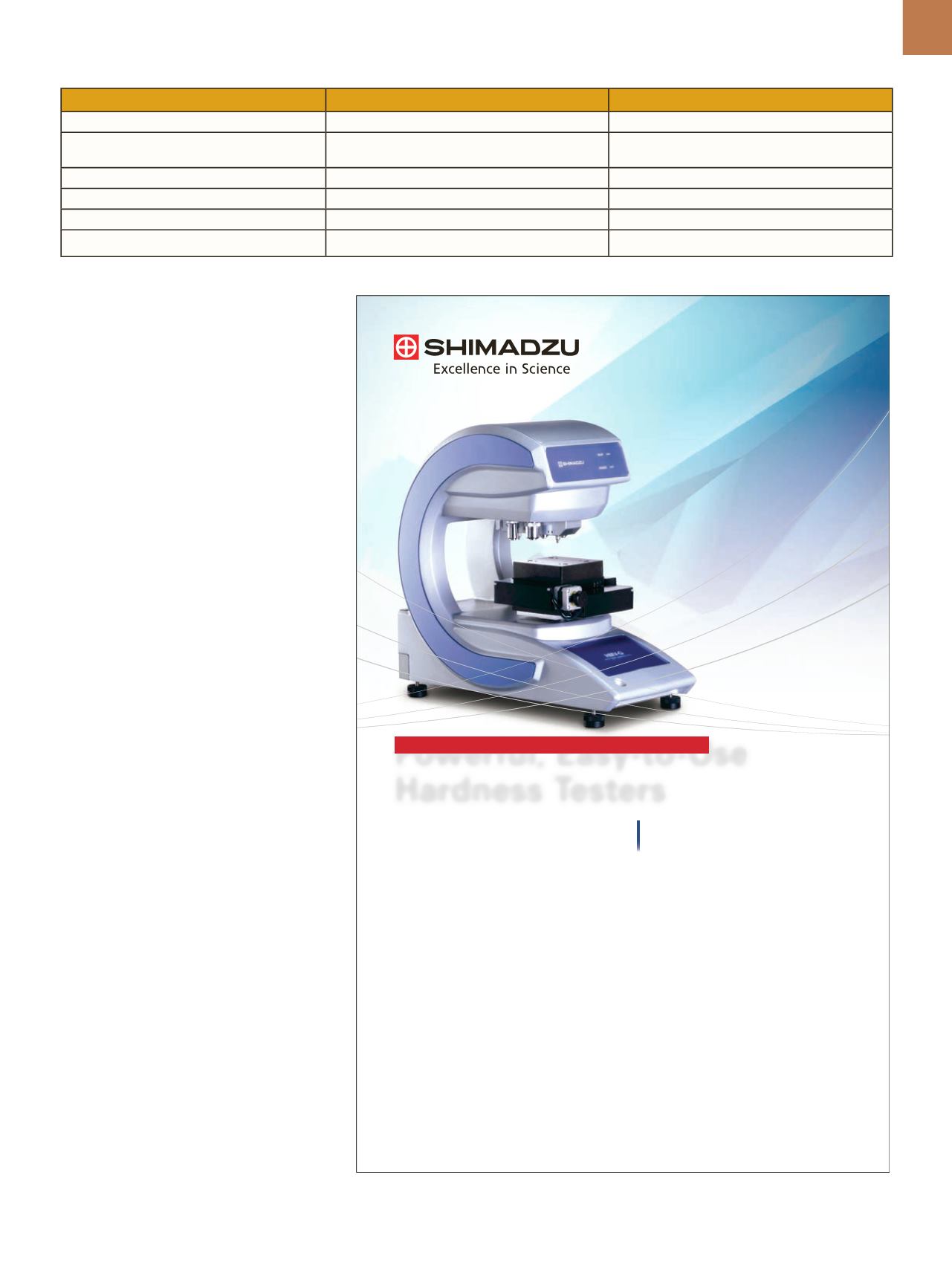

A D V A N C E D
M A T E R I A L S
&
P R O C E S S E S | J U N E
2 0 1 5
2 7
differences between these items. In
some cases, standards organizations
use different terms or result names to
refer to the same property. The table
above shows a few common examples
of result names that are found in ISO
and ASTM standards.
SUMMARY
Global and local rebar product
and testing standards define specifica-
tions and mechanical testing require-
ments. These standards help to ensure
consistent quality of rebar produced
throughout the world. It is critical for
any tensile testing program to make
sure there is compliance with required
standards and that standards being
followed are up-to-date. To further re-
duce the risk of incorrectly passing or
failing product, it is also essential to
regularly evaluate all aspects of the
testing process and take corrective ac-
tions as necessary. Evaluation should
include equipment (machine, grips,
extensometers), specimen preparation,
setup (software and hardware), test
control (automatic or manual), calcu-
lation of results (automatic or manual),
and graph analysis.
~AM&P
For more information:
Jeff Shaffer
is manager of product marketing and
management for the Industrial Products
Group of Instron, 900 Liberty St., Grove
City, PA16127, 724.450.4965,
jeff_shaffer @instron.com,
www.instron.com.
TABLE 2—COMMON TERMS FOR REBAR TENSILE TESTING RESULTS
ISO
ASTM
Yield Point (distinct)
Upper yield strength (ReH)
Yield point (drop of beam or halt of pointer)
Yield strength (offset method)
0.2% Proof strength, non-proportional
elongation (Rp 0.2)
Yield strength (0.2% offset)
Maximum stress
Tensile strength (Rm)
Tensile strength
Ratio of tensile strength/yield strength
Rm/ReH
Not required
Strain at maximum force
% Total elongation at maximum force (Agt)
Not required
Elongation after fracture
% Elongation after fracture (A or A
5
)
% Elongation
Shimadzu’s HMV-G Series of Micro Vickers hardness testers provides an operator-friendly, cost-effective solution for a wide range of hardness testing applications. Available in PC- controlled and standalone models, the HMV-G series offers an array of advanced automated functionality, while incorporating a novel frame, to provide simple, secure analysis of a wide range of samples. Shimadzu’s HMV-G Series features: ■ Automatic length measurement function ■ Novel G frame improves operability and enables testing of long and large-area samples ■ Automatic lens switching function ■ Compact, built-in CCD camera ■ Automatic sample shape recognition function ■ Routine inspection graphs function ■ Easy-to-use software Shimadzu Scientific Instruments Inc., 7102 Riverwood Dr., Columbia, MD 21046, USA Learn more. Call (800) 477-1227 or visit us online at www.ssi.shimadzu.com/HMVG Powerful, Easy-to-Use Hardness Testers In addition to the HMV-G series, Shimadzu offers a comprehensive range of testing machines that will help you exceed R&D/QA/QC requirements in the development of higher quality materials & products.

















